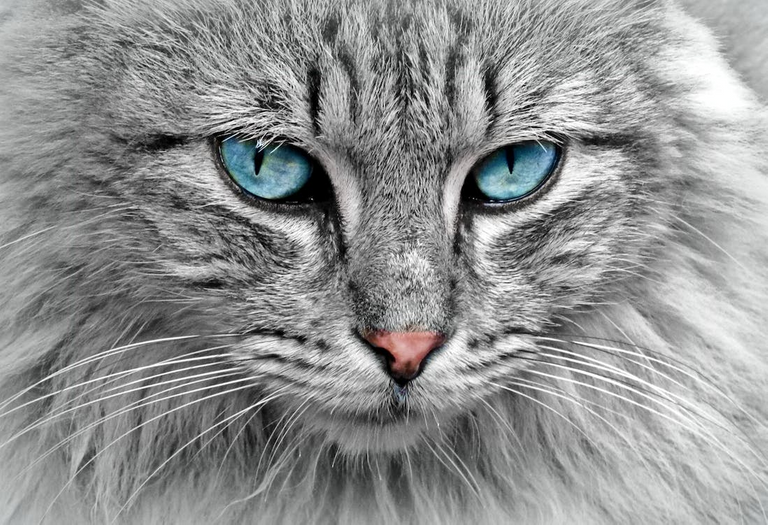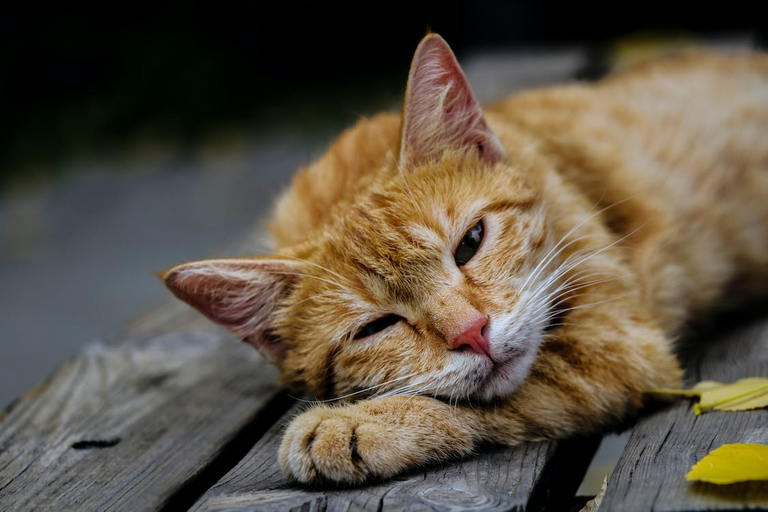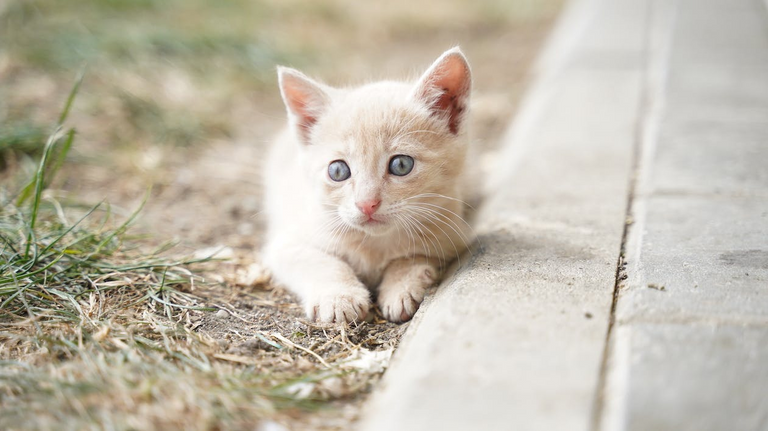The Differences Between Humans and Cats in Color Perception

Grey cat
Pexel
A fascinating component of visual perception that varies significantly across animal species is colour perception. The existence of specialised retinal cells known as cones is largely responsible for the capacity of humans to see a broad variety of colours. This extraordinary ability to see colour is regarded as a key characteristic that sets our species apart. However, while having great vision, the domesticated cats with which we cohabit do not see colour in a similar way to how humans do. The limitations of cats' colour vision are explored in this article, along with the many variables that affect how cats perceive their particular visual surroundings.
Understanding the Cat's Eye View
The word "crepuscular" describes the behaviour of cats, which is characterised by increased activity levels in the early morning and late evening. Cats are considered crepuscular animals. Due to their evolutionary background as night hunters, the observed behaviour may be explained. Due to their nocturnal activity, cats have evolved special optical characteristics that set them apart from diurnal mammals like humans. With the help of these traits, cats can successfully explore their surroundings in low light and spot prospective food sources.
Cat's perception of colour
The numerous different kinds of photoreceptor cells seen in the human eye mostly influence how people perceive colour. The cone cells in the human retina may be divided into three categories, each of which is sensitive to a particular spectrum of red, green, and blue colours. The integration of the data obtained from the cones allows the human visual system to see a broad range of colours. Cats, on the other hand, only have two different kinds of cones, making them sensitive to wavelengths in the blue and green spectrums. As a result, those who have this illness can only perceive a limited spectrum of blues and greens in colour.
Not being sensitive to the colour red

An orange cat lying on a wooden plank
Pexels
Cats are less sensitive to the colour red than people are, demonstrating a significant difference in the two species' perceptions of colour. The red cone, a critical element responsible for detecting longer wavelengths, is absent from the retinas of feline species. This phenomenon leads to the observation that cats may see colours differently than people do, appearing as different shades of blue or grey. As a result, felines may have a distinctive perceptual viewpoint while seeing objects in their surroundings, such as food, toys, and other animals.
For the Purpose of Hunting, Modifications Have Been Made
It has been noted that cats may have a relatively restricted awareness of colour when compared to humans. However, during the course of their evolutionary growth, their ocular anatomy underwent substantial modifications that now allow them to thrive in their position as hunters. Their extraordinary ability to sense motion and contrast makes them exceptionally effective predators, even in circumstances with poor illumination. These creatures can, for example, detect the movement of little mice in thick or grassy areas, which helps them in their predatory and hunting tactics.
The capacity to recognise and react to changes in shape and position.

A white kitten
Pexel
Rod cells, which are specialised photoreceptor cells that help with vision in low light and allow the detection of motion, are abundant in the retinas of cats. Exceptional night vision is also a trait of cats. For feral cats, having improved motion perception is especially important since it helps them find possible prey or dangers even in low-light situations.
In conclusion, despite having a worse sight of colour than humans, cats' special visual adaptations have helped them succeed as effective hunters. They have a restricted chromatic vision that primarily emphasises colours in the blue and green spectrums as a result of their particular lifestyle and evolutionary history. It is useful for those of us who own cats to recognise the skills of our feline friends and successfully meet their specific demands by recognising the variances in their visual talents. This finding is an important reminder that each species sees and interacts with its surroundings differently, depending on its ecological setting and biological characteristics.
- Spector, D. (2016, May 18). How cats see the world compared to humans. Business Insider. https://www.businessinsider.com/how-cats-see-the-world-compared-to-humans-2016-5?r=US&IR=T#:~:text=A%20cat’s%20vision%20is%20similar,like%20another%20shade%20of%20blue.&text=Cats%20also%20don’t%20see,of%20colors%20that%20we%20can.
- How do animals see colors? How is their vision different from humans? (n.d.). Quora. https://www.quora.com/How-do-animals-see-colors-How-is-their-vision-different-from-humans
- Williams, J. (2023, April 21). Cat Vision vs. Human Vision: Who Can See Better? AZ Animals. https://a-z-animals.com/blog/cat-vision-vs-human-vision-who-can-see-better/
- Cbcc-Ka, H. B. K. C. C. K. (2020, November 18). Can Cats See Color? Daily Paws. https://www.dailypaws.com/cats-kittens/health-care/cat-conditions/can-cats-see-color#:~:text=Cats’%20two%20color%2Ddetecting%20cones,notice%20some%20shades%20of%20green.
- https://www.greatpetcare.com/cat-health/what-colors-can-cats-see/
- Alberts, E. C., & Alberts, E. C. (2023, March 28). What Colors Can Cats See? Great Pet Care. https://www.greatpetcare.com/cat-health/what-colors-can-cats-see/


Congratulations!
Your post has been manually curated and reblogged.
You can follow our curation trail on Hive.Vote
If you want to support us and the authors we vote for you can upvote this comment or delegate some Hive Power to our account. Thanks!
Propose a worthy post by mentioning us in the post or in a comment.
We reblog curated posts, follow us if you wish to see them in your feed.
Thanks for your contribution to the STEMsocial community. Feel free to join us on discord to get to know the rest of us!
Please consider delegating to the @stemsocial account (85% of the curation rewards are returned).
You may also include @stemsocial as a beneficiary of the rewards of this post to get a stronger support.
Dear @jsalvage !
After reading your article, I understood that cats have better night vision than humans, but they are colorblind! 😃
James!
I am curious about your personal life!😄
Lol, if I write about my personal life, then I don't think you will finish the book in a week. but why are you interested in my personal life all of a sudden?😂
James!
I remember that you posted a lot of your pictures in the past.
I want to see you as you are now!
😂 hahaha. If you have WhatsApp messenger or maybe Facebook account, I can share my pictures with you there.
You'll get that whenever I connect with you on WhatsApp messenger or any other social network😂😂
James!
I could not use Facebook and WhatApp now!
I am visually inpaired!😔
So, I have a hard time using Discord.
How do you manage to use the internet? 🥺
I read text on the Internet with magnification.
Oh, I see. But you can do the same while reading WhatsApp message. I guess
James!
Thank you for your advice!
I will try on😀!
I wonder whether there's any way color perception can be objective, e.g. if you have all the cones! There's philosophical literature on this issue, a sub-field called "the philosophy of color", but I'm not well-read on it.
I Think I will do more research on that. will be a nice topic to study! Thanks for stopping by